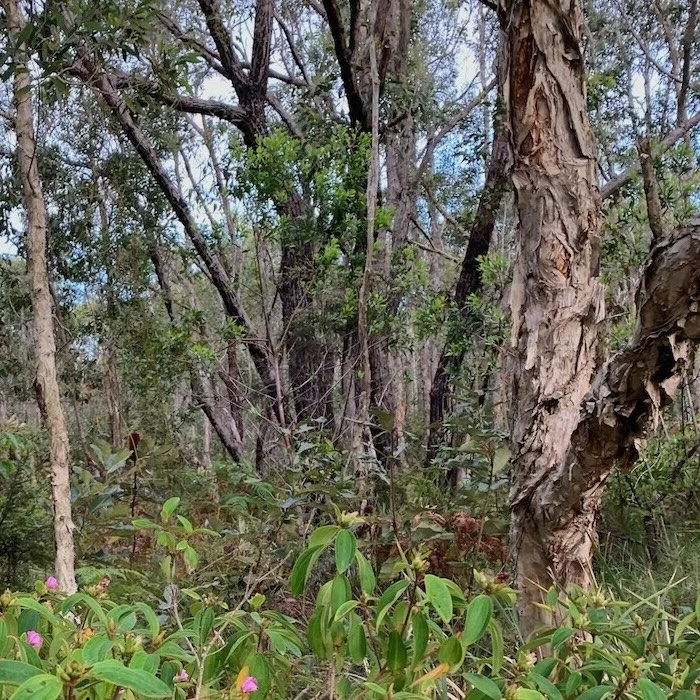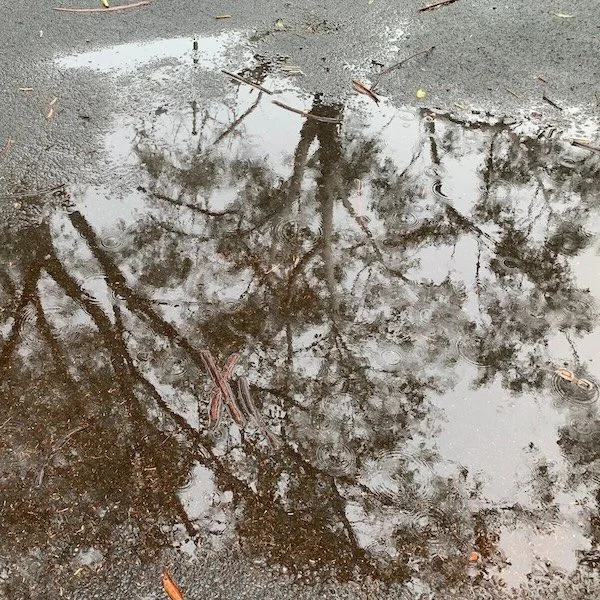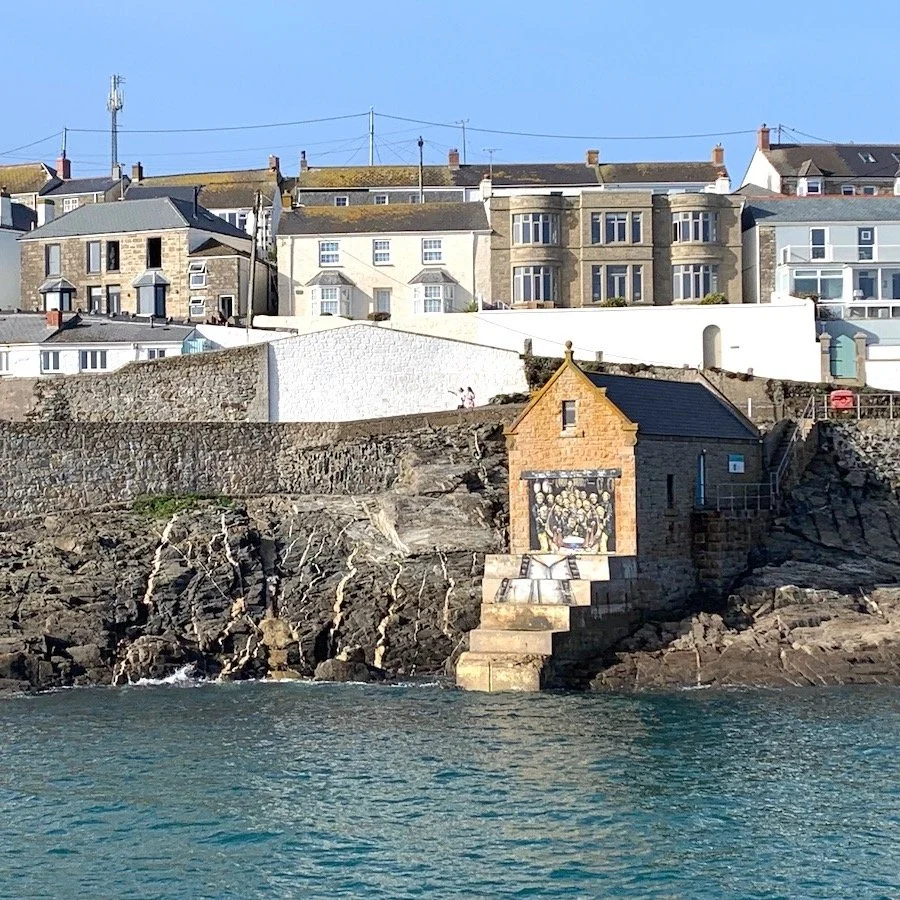Connecting to Nature
Swamp Sclerophyll Forest in Pottsville Waters, New South Wales.
Returning to Australia after seven months away, I felt the need to get grounded; to connect myself back into where I live. Fortunately nature is right at my back door. It suggests patterns of connection that give life purpose, even if we are still searching for what part we play in it.
I seek to understand this through writing and creating art, to help clarify who I am and my place/purpose in the world. Art doesn’t provide the answer but it helps formulate the questions. What brings me joy?
I found this out as soon as I stepped out of the car and onto the grass outside our house after the 24 hour journey home from the UK. The first thing I noticed was the birdsong. I realised I had not heard it in such abundance for the last few months. It led me to think about the joy I find in nature, where connection with other than human species of plants and animals expands my spirit.
Lying in bed at night with the window open, the sound of the sea fills the air. Suddenly the Buruwagan (bush curlews) start calling. When I first moved to the coast and heard them, it sounded like a woman screaming and I rushed outside to see what was happening. The street was deserted except for several stately birds running up the street silhouetted in the street lights.
It turns out that these Buruwagan (scientific name: Burhinus grallarius) are very territorial and call to each other in a series of quavering trills that end in a high pitched crescendo. They are deemed endangered in New South Wales.
There are only a few remaining habitats in the Tweed Shire’s coastal villages all of which are under threat from residential development. They live in the Boorum wetlands behind our house, where they emerge each night via the little park adjacent to our house to stake their territory.
Their calls have become the ‘soundmarks’ of my local terrain and as such need to be protected and preserved. Like Australia’s iconic magpie and kookaburra songs; our world would be diminished without their calls.
I admit that I have taken where I live somewhat for granted. Unfortunately beachside villages like where I live, are always being eyed off for future development.
Pottsville Waters is called that because of the extensive network of wetlands that it is built around. Lagoons join swamp floodplain forests filled with Melaleucas, Acacias, Banksias, Casuarinas and Callistemons, to name just a few plants I recognise. If you’re lucky you can spot a koala or two, even hear owls sometimes at night as well.
Having spent time in heavily populated towns or rural farmed areas in the UK, I realise what a precious resource this patch of wetlands is. It suggests my next investigation into place for the final project of my Masters course.
Where to start? Like they say in the permaculture manuals, start at your back door. There’s a track right behind our house that leads to a lagoon filled with waterlilies and ducks. I’ve never mapped it, so maybe now is the time. It’s the beginning of my next adventure.
The wetland waters flow into the sea here at the mouth of the Mooball Creek in Pottsville.





